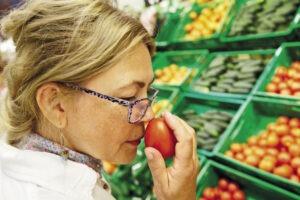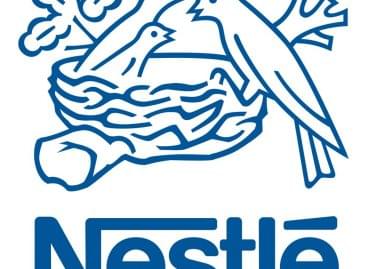New times, old age
In Europe ageing shoppers are a driving force on the FMCG market. Examples include Belgium, where the share of people aged 65+ in FMCG sales increased from 21% to 30% in 20 years.
This article is available for reading in Trade magazin 2025/5.
According to YouGov data, around 35% of all purchases are now attributable to baby boomers – and this isn’t a small thing: over 10 billion transactions on 15 markets. Plus these consumers also shop more often, with an average of 277 times a year instead of 243, and they are willing to spend more on each item they buy. While the population of the EU-27 is shrinking (from 446.8 million at the beginning of 2019 to around 441.9 million in 2050), the weight of the 65+ generation is growing significantly: from 90.5 million in 2019 to 129.8 million in 2050.

Grandparents are less concerned about price when it comes to shopping for their grandchildren
They are environmentally and health conscious
The main drivers of demand on the sustainable and healthy product market are senior consumers, as it is them who stick to their green habits regardless of their financial situation. However, they are sceptical of the sustainability efforts of retailers and are always ready to check whether the green claims are true or not. Their environmental focus is primarily on (plastic) packaging, waste reduction and buying local food products, which means they are more likely to choose refills and avoid plastic-packaged products, while plant-based, carbon-neutral solutions have a smaller influence on them. They are increasingly open to the flexitarian diet, but they are reluctant to give up meat, so they are less affected by veganism and vegetarianism.

56% of eco-active people who care about the environment and are willing to do something about it are aged 56 or over
Private labels and discounters aren’t favourites
High inflation has left many of them struggling financially, especially women living alone and those with a small old-age pension. Because of this one might assume that private label products dominate in their product choices; in fact the proportion of these is 5% lower than among Generation Z shoppers, who grew up buying PL products. In Germany baby boomers account for 34% of the private label market, while Gen Z has a 40% share. Baby boomers aren’t keen on discount supermarkets either: their share of the channel’s value sales is below average. Figures also show that shopper loyalty is increasing with age – boomers are less likely to change shops without a good reason: 81% are repeat shoppers, compared with only 56% of Gen Z regulars.
Traditional and online shops can go hand in hand
Older generations don’t shy away from digital channels (27% use in-store apps and 26% use digital coupons), but they like the tried and tested, familiar methods: 60% typically go to the store with a shopping list, while loyalty programmes (46%) and promotional leaflets (41%) are secondary when gathering information in advance. Although 56% don’t like shopping online, 16% don’t say no to it; mainly they purchase household and personal hygiene products, as well as basic and durable foods online. Boomers aren’t averse to new online players either, for example Temu is ahead of Amazon, Action and Ikea with a 29% reach.

Seniors also shop online, just not regularly
They watch TV, but also stream and use Facebook
Although 90% of them own a smartphone, they are loyal to traditional media: 41% spend more than 3 hours a day in front of the TV set, while another 41% spend at least an hour. More than half of boomer households have a streaming subscription – 24% spend an hour or more watching a series. Gen Z and baby boomers are two different worlds when it comes to media consumption, even if we can’t say that older people are against digital media. Surprisingly, 92% of them use Facebook, 41% are on Instagram and 21% visit Pinterest regularly. Their favourite topics are baking and cooking and travel. There is lots of data that shows: brands that reach multiple generations at the same time can build a solid foundation for growth.
Slaves to their habits
Older generations aren’t really novelty hunters, so it is no wonder that they are less aware of FMCG innovations. One third – twice as many as in Gen Z – can’t name a single category in which they have seen a good innovation. Given that they are slaves to their habits, they tend to notice innovations in those categories that fit these habits. A good example of this fresh food – vegetables, fruit, bakery and dairy products – but they also find it easier to embrace new innovations in the household goods and personal care segments. When it comes to innovation, it is essential that these offer clear benefits and suits their existing habits, e.g. non-alcoholic beer is a health-conscious alternative, under the same brand name with minimal changes. Older people are very much needed for realising significant sales growth, and they are now as diverse a consumer group as young people. Many are active and not only at work, but also physically and socially, while others prefer to enjoy retirement and focus on their own well-being. //
Related news
KPMG CEO Outlook 2025: replanned trust
🎧 Hallgasd a cikket: Lejátszás Szünet Folytatás Leállítás Nyelv: Auto…
Read more >Generations X and Y would be happy to cook more
🎧 Hallgasd a cikket: Lejátszás Szünet Folytatás Leállítás Nyelv: Auto…
Read more >Related news
Nestlé invests GBP 28m in British instant coffee factory
🎧 Hallgasd a cikket: Lejátszás Szünet Folytatás Leállítás Nyelv: Auto…
Read more >Could there be a turnaround?
🎧 Hallgasd a cikket: Lejátszás Szünet Folytatás Leállítás Nyelv: Auto…
Read more >How is Hungary’s demographic decline transforming retail?
🎧 Hallgasd a cikket: Lejátszás Szünet Folytatás Leállítás Nyelv: Auto…
Read more >






